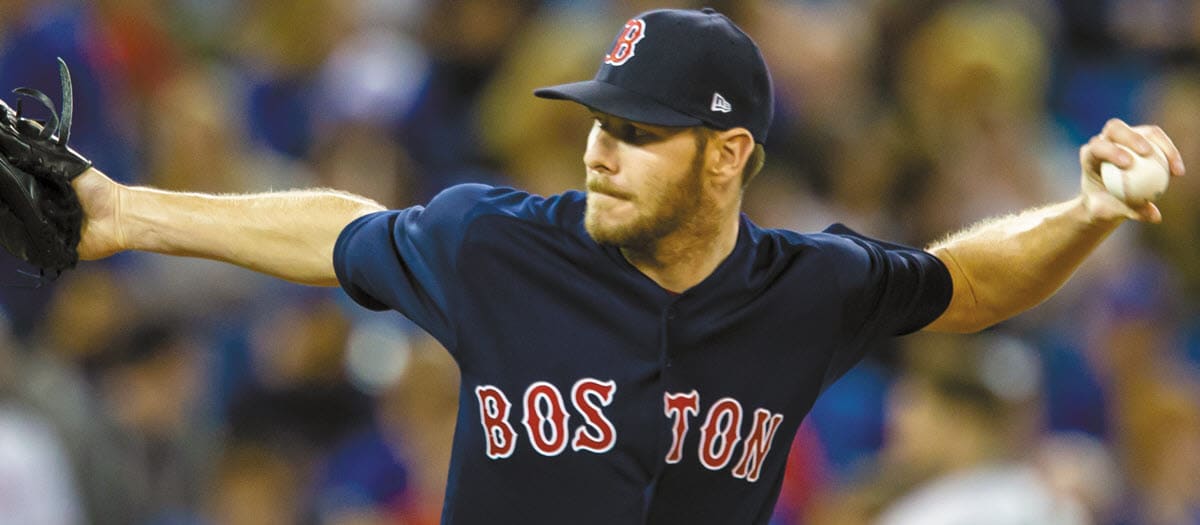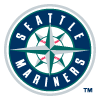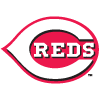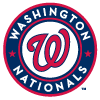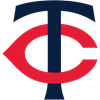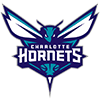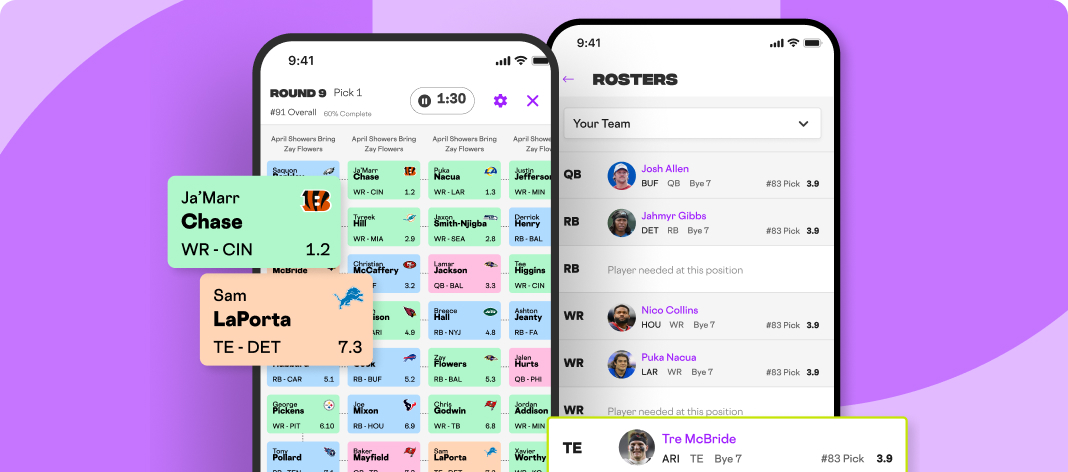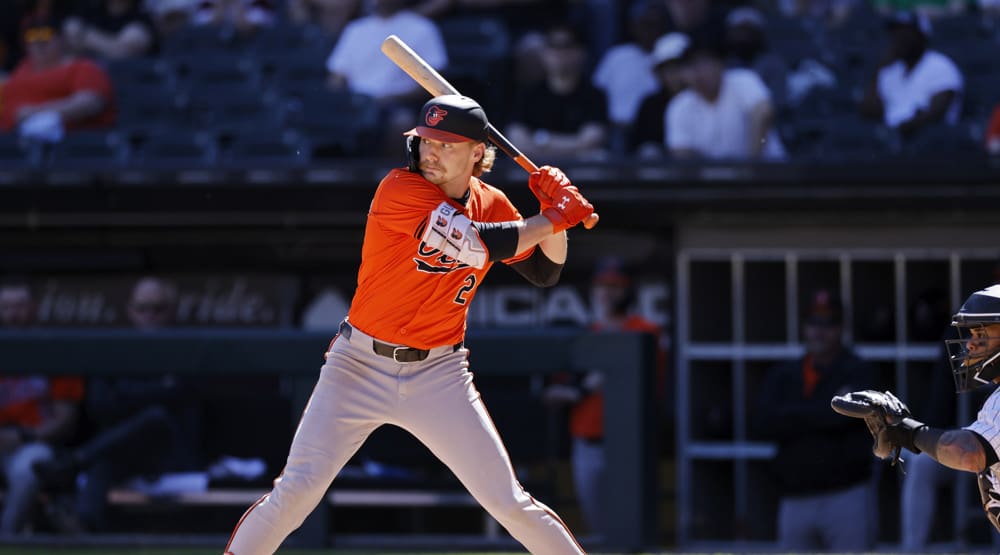I will begin this column by saying there is no conclusion at the end. The purpose of this column is to look at the factors in play when considering how to handle pitching in the 2021 season given we are just a couple weeks from the offseason.
This season has presented a number of situations unlike anything we have ever seen in this sport, and its impact will be felt at least through the 2021 season as well. Consider that (entering play Sunday):
- 703 pitchers have been used in 2020, in 1,356 games. That is the fifth-highest total in any FULL season in history, trailing only the previous four seasons. There is an outside chance that 2020 finishes in the top four.
- 470 pitchers have worked at least 80 percent of their games in a relief role; that is the third-highest total in league history. It is unlikely that moves any higher, but to accomplish that in an abbreviated schedule is something.
- Six teams — Boston, Toronto, Detroit, Baltimore, Atlanta and Tampa Bay — have seen relievers throw at least 50 percent of the team's pitches
- Two teams — Cleveland and Cincinnati — have had their starting pitchers soak up at least 60 percent of the team's overall pitches
- There is a 51/49 split in wins between starters and relievers, which has held mostly true once rosters dropped from 30 to 28 players.
- 32 pitchers have succumbed to Tommy John Surgery in 2020
One may assume with all of
I will begin this column by saying there is no conclusion at the end. The purpose of this column is to look at the factors in play when considering how to handle pitching in the 2021 season given we are just a couple weeks from the offseason.
This season has presented a number of situations unlike anything we have ever seen in this sport, and its impact will be felt at least through the 2021 season as well. Consider that (entering play Sunday):
- 703 pitchers have been used in 2020, in 1,356 games. That is the fifth-highest total in any FULL season in history, trailing only the previous four seasons. There is an outside chance that 2020 finishes in the top four.
- 470 pitchers have worked at least 80 percent of their games in a relief role; that is the third-highest total in league history. It is unlikely that moves any higher, but to accomplish that in an abbreviated schedule is something.
- Six teams — Boston, Toronto, Detroit, Baltimore, Atlanta and Tampa Bay — have seen relievers throw at least 50 percent of the team's pitches
- Two teams — Cleveland and Cincinnati — have had their starting pitchers soak up at least 60 percent of the team's overall pitches
- There is a 51/49 split in wins between starters and relievers, which has held mostly true once rosters dropped from 30 to 28 players.
- 32 pitchers have succumbed to Tommy John Surgery in 2020
One may assume with all of the new pitching at the major league level, things would be a bit skewed to the offense, but indicators have remained mostly stable compared to recent seasons. In fact, pitchers has held hitters to lowest overall batting average in recent seasons:
Season | ERA | AVG | WHIP | HR/FB | F-Strike% | SwStr% | K% | BB% |
|---|---|---|---|---|---|---|---|---|
2015 | 3.96 | 0.251 | 1.29 | 11% | 61% | 10% | 20% | 8% |
2016 | 4.19 | 0.252 | 1.32 | 13% | 60% | 10% | 21% | 8% |
2017 | 4.36 | 0.252 | 1.34 | 14% | 60% | 11% | 22% | 9% |
2018 | 4.15 | 0.245 | 1.30 | 13% | 61% | 11% | 22% | 9% |
2019 | 4.51 | 0.249 | 1.33 | 15% | 61% | 11% | 23% | 9% |
2020 | 4.52 | 0.244 | 1.34 | 15% | 60% | 11% | 23% | 9% |
If we extend out the rates to the first decimal point, the league-wide walk rate is eight percent worse this season (9.2 percent) than it was in 2019 (8.5 percent). We can chalk that up to a lot of the inexperience teams have relied upon this season to cover injuries, but we can't overlook the inexperience behind the plate as well. Baseball has seen 21 umpires make their MLB debut this season to replace a heavy dose of folks who retired during the offseason. Home runs, which could be a combination of the 2019 baseball crawling its way back into the supply as well as inexperienced pitchers struggling with consistent command, appears to be the new norm with 15 percent of flyballs leaving the yard in consecutive seasons.
The larger concern for me is the last one on the list above because of its long-term impact on baseball and the immediate impact it will have on our 2021 draft plans. The 32 pitchers on that list are from all levels of baseball, but according to Joe Roegele's awesome TJS List document, 17 of the pitchers are major league pitchers. That is 53 percent of all the TJS surgeries in 2020, which is far above any season in the previous decade.
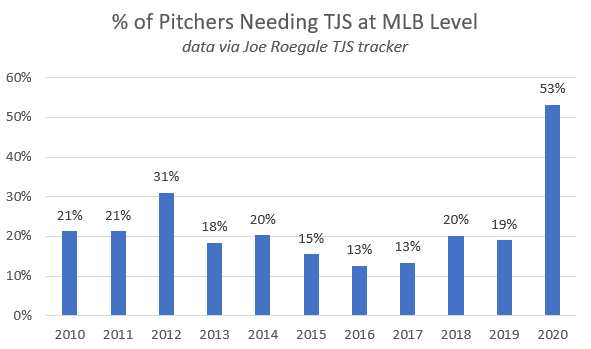
The concern here is that, in a normal season, pitchers not at the major league level account for roughly 85 percent of TJS in a given season. What happens in 2021 when these young developing arms come back to the revamped minor league structure? Teams were forced into pushing some arms this year with the injury attrition during the season, but it remain to be seen what they do in 2021 as some pitchers are pushed back into normalized usage patterns.
Also, there will be several high-impact arms who are likely to be non-factors for fantasy purposed in 2021 because they will still be in recovery from TJS this season, including Chris Sale, Noah Syndergaard and Luis Severino along with promising relievers such as Seranthony Dominguez, Tommy Kahnle and Colin Poche. Tampa Bay has lost three pitchers who were 2019 contributors and on the opening day 2020 roster in Poche, Jalen Beeks and Yonny Chirinos with a potential fourth one in Andrew Kittredge who is attempting PRP injections before deciding on surgery. Their top pitching prospects are lower in the organization, which has forced them to pull names out of a hat this year to piece together a bullpen that has been decimated by injury.
Overall, the RotoWire Injury Report tool shows 369 pitchers on it, with a variety of ailments. Half of the injuries on that list are from the shoulder on down the arm. Talented arms such as Emmanuel Clase and Domingo German has missed the entire season due to suspension. Jordan Hicks, Michael Kopech, David Price and Marcus Stroman lead the list of notable names who opted out of the season and haven't thrown a competitive pitch since March.
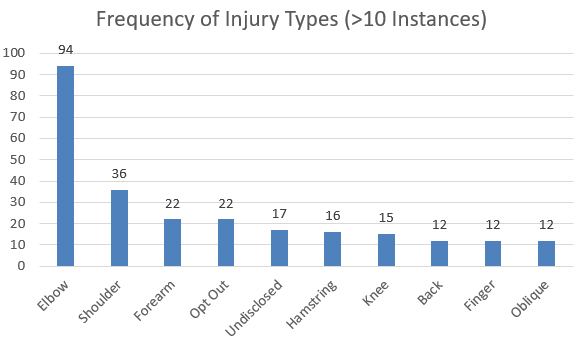
All in all, there has been much disruption to pitchers and pitcher development, both of which are notorious creatures of habit. This does not feel like a problem that will go away anytime soon. Clubs being able to carry 28-plus players for this season has certainly helped, but as of now, there is no talk of that continuing into 2021. This problem has been tough enough to adjust for in 2020 in real time with expanded rosters, so it will be interesting to see how teams manage covering their short-term needs against the backdrop of their long-term pitching development plans over the scope of what will hopefully be a full 2021 season.
Your 2021 draft plans should be prepared to address these concerns. There is a reason TINSTAPP (there is no such thing as a pitching prospect) is a long-running trope in fantasy baseball, but in 2021 that may accelerate in popularity with many developing arms trying to resume a high-stress activity and environment after a long layoff. Many fantasy managers normally lean heavy bats in the reserve rounds, but perhaps this will be the season to lean more on pitchers who are not just closer specs. Reliever volatility is an issue we deal with every season, but managers are leaning on their high-leverage relievers with increasing frequency this year given the importance of each game in a shortened season. The impact of that change in usage for the veterans, many of which are pitching on workloads that would be regular-season highs for them if extrapolated over a full season, will be worth watching as well.
I do not have the answers, but I sure have a lot of questions as I start to look at the 2021 fantasy season for pitching.


